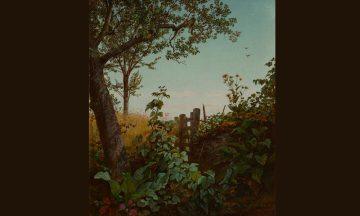Bailey Trela at the LARB:
 The painting that kicked it all off, Ruskin’s own Fragment of the Alps, goes a long way towards explaining the intermingling of spirituality and scientific exactitude found in the best of the American Pre-Raphaelites’ works. Shuttled around America in a touring exhibition in the year 1857, the small canvas is a fantasia of vivid yellows and saturated purples, yet this almost surreal medley stems from no more mystical source than Ruskin’s hidebound attention to the play of light on stone. As the exhibition notes make clear, the careful delineation of the natural environment was a profoundly moral act for Ruskin. Detail became a form of prayer, a sort of thanksgiving for and hymn to God’s creation. The delicate plexing of boughs in Charles Herbert Moore’s Pine Tree, from 1868, are a perfect non-Ruskinian example of this drive — the detail is so fine that the tree seems to be melting upward, the fine pen markings gradually being blown away by the wind.
The painting that kicked it all off, Ruskin’s own Fragment of the Alps, goes a long way towards explaining the intermingling of spirituality and scientific exactitude found in the best of the American Pre-Raphaelites’ works. Shuttled around America in a touring exhibition in the year 1857, the small canvas is a fantasia of vivid yellows and saturated purples, yet this almost surreal medley stems from no more mystical source than Ruskin’s hidebound attention to the play of light on stone. As the exhibition notes make clear, the careful delineation of the natural environment was a profoundly moral act for Ruskin. Detail became a form of prayer, a sort of thanksgiving for and hymn to God’s creation. The delicate plexing of boughs in Charles Herbert Moore’s Pine Tree, from 1868, are a perfect non-Ruskinian example of this drive — the detail is so fine that the tree seems to be melting upward, the fine pen markings gradually being blown away by the wind.
more here.
